It’s no easy feat to design a workspace for one, so it’s not surprising that it becomes an even taller order to prepare a home office for two.
Many started working from their homes when the COVID-19 pandemic hit in 2020. The 50 or more faces of other employees that you see every day has now been replaced by the face of a sibling, roommate, parent, or significant other. This new officemate has a different job than yours but you would need to share one office space. You have different needs and personal preferences to meet so who decides what the home office will look like? What will it have? What is a non-negotiable?
If we haven’t reiterated it enough, yes, it’ll be difficult. But no one said that it wouldn’t be fun! It’s worth it to plan as early as now, even though you’ll be making changes along the way as you discover more about each other’s dynamics in a workplace. We listed below seven things to carefully consider when designing a shared home office:
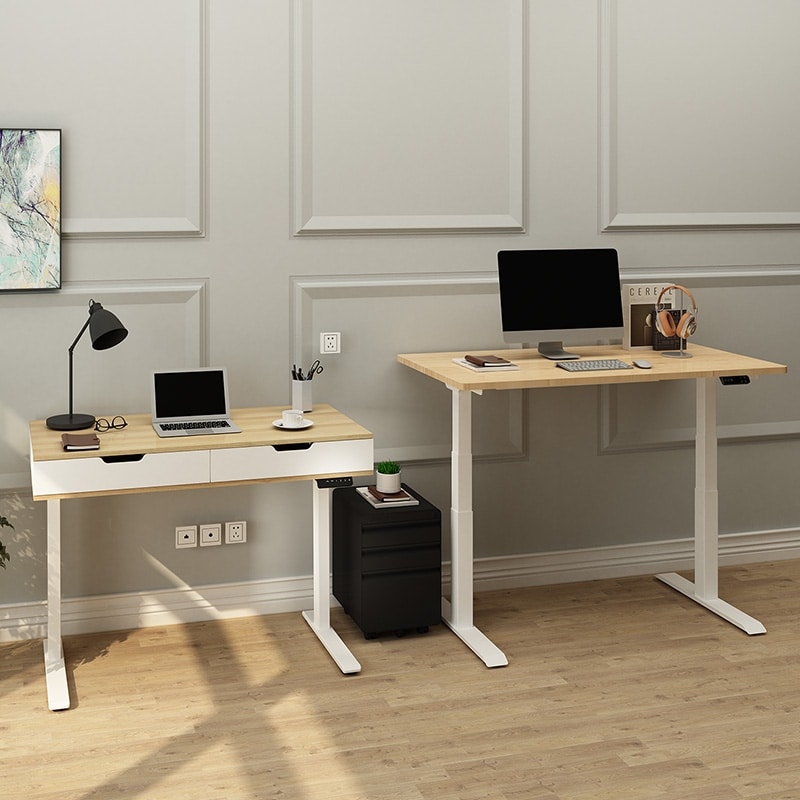
1. Space
How big is your place anyway? The first thing to look at is how much available space there is at your home to become a workstation. The space will say a lot if your design in mind is even achievable. On one hand, you would have the flexibility to play around if working on a big floor area and will also allow you to have more privacy. On the other hand, you would need to tap into your creativity and organization skills to create space.
Since this is a shared space, the next step is to consider how much of it each of you will be taking in your chosen work area. If you’re having a tough time deciding, a good gauge would be to depend on each of your professions. You would probably need a bigger desk to draw for an artist, two monitors for writing advanced software for a coder, or a little corner for a writer’s laptop and a notebook.
If there is available space, the shared work area may be divided into two opposite ends. Consider creating a symmetrical workspace for a more cohesive look. You may put two standing desks beside each other to make a long where you could each take a good enough amount of space on your chosen side.
If horizontal space is a concern for you, the height-adjustable standing desks of FlexiSpot are thin and sleek. A standing desk will help you to stay alert and focused, becoming more productive and efficient with your work. The height of your desk is customizable and may be changed at any time of the day, whether you prefer to be seated or standing.
FlexiSpot also has options for standing desk converters that will upgrade your workstation in a snap of a finger.
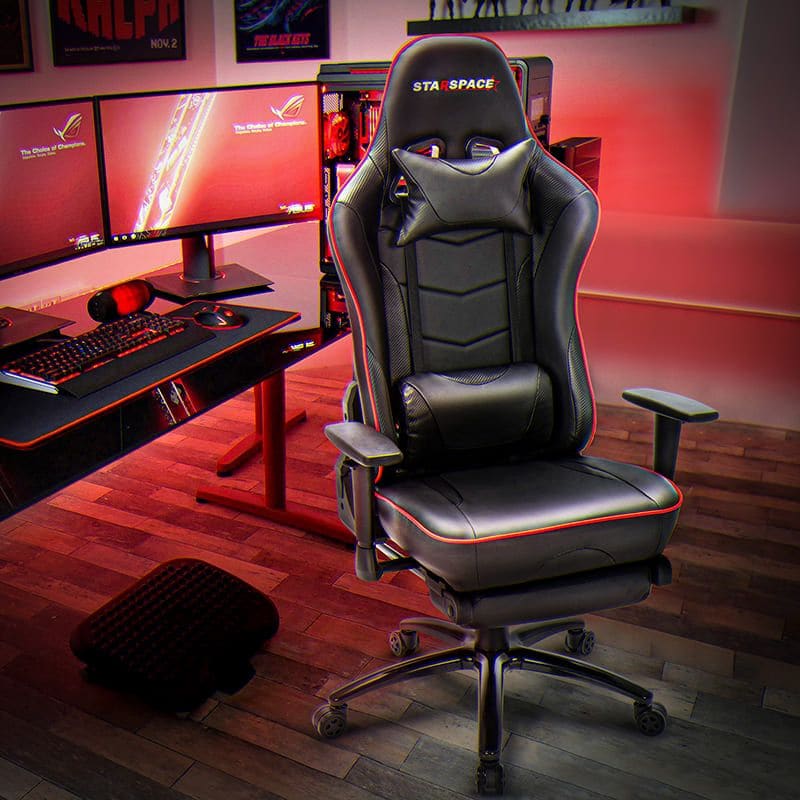
2. Privacy
What’s private for you may not necessarily come off private for your partner and vice versa. You would need to communicate your different parameters and to find a common ground that will make the design sound for both of you. As was mentioned above, your desks may be placed on opposite sides of the room for privacy.
Your chairs can also be positioned back-to-back from each other so that you won’t get conscious if your partner sees your screen while working. FlexiSpot has a massage gaming chair that is guaranteed to give you the ultimate luxurious sitting experience. Not only is it comfortable and ergonomic, but it also looks good with its soft luxury breathable bonded leather. It has a thick padded seat with the high-density thick foam and a steady chair base that makes the structure stable. You may rock back and forth with a rocking angle at 10° but be considerate of your partner if your chairs are back-to-back from each other. The same goes if you want to recline your chair at an angle between 90° to 170°.
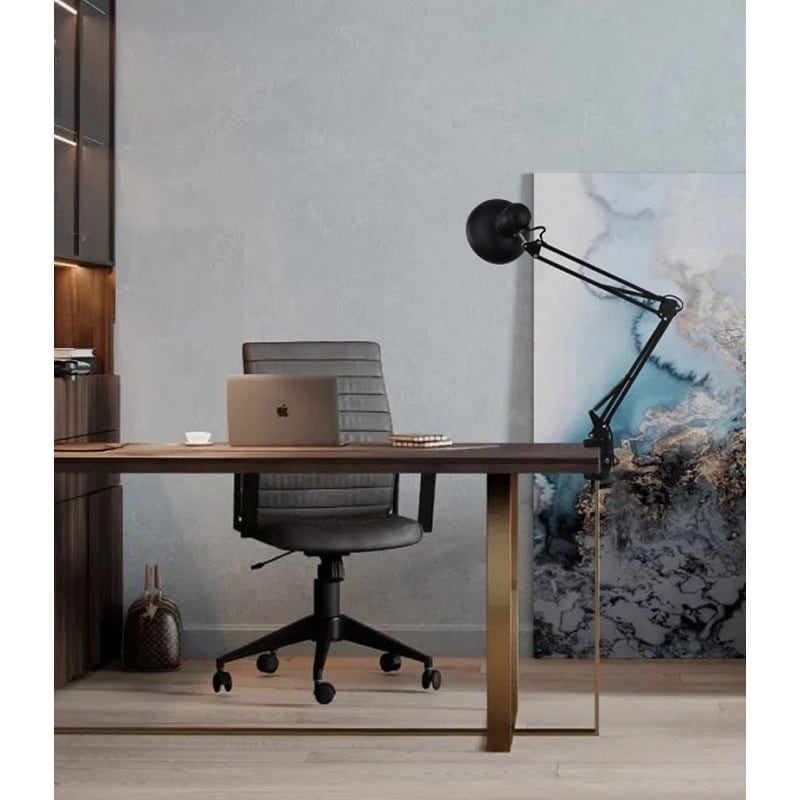
3. Lighting
Lighting is very crucial in a person’s efficiency. You have to place one of your desks with respect to the person’s preferred lighting set-up. For instance, if you prefer natural lighting, consider putting your desk on the side where it is facing the window.
Both of you will be doing yourselves a favor with task lighting, also referred to as office lighting where a lighting fixture is fixated on the task that you are doing. This helps stimulate the brain, improving work efficiency.

4. Sound
Sound is also very important because this might be a cause of annoyance on either end. So before your first day starts as officemates, tell each other already if you want speaker music to be played and if yes, decide who gets to choose what songs would be played. If this is not the case, ask your partner if he or she prefers to listen to their own music where noise-canceling headphones may be of help. This doesn’t help only with ambient music, it will also allow zero disturbance when one of you is in a video meeting or an audio call with your superior. The officemate won’t be bothered with the chatterbox because his environment sounds are muted anyway.

5. Schedule
Another thing to know beforehand is each other’s schedules. These include the exact time each needs to report to work, have a lunch break, and must sign off. You may want to schedule breakfast and shower time especially if you are just sharing one toilet and want to have breakfast together. Set a common time as well that both of you are free for a casual “office” chitchat in between work. This may vary greatly but it doesn’t hurt to define time blocks so that you won’t be pestering each other regarding availability.
It is also very important to let your new officemate know of a scheduled video conference or a phone call meeting. Let them specifically know if the video is turned on so that they would know when it’s okay to pass by and not to. Plus you have to know their video call schedule because it might clash with yours and you haven’t worked out the arrangement. Write your schedule and tasks on a whiteboard mounted to the wall that will help both of you to stay on track.
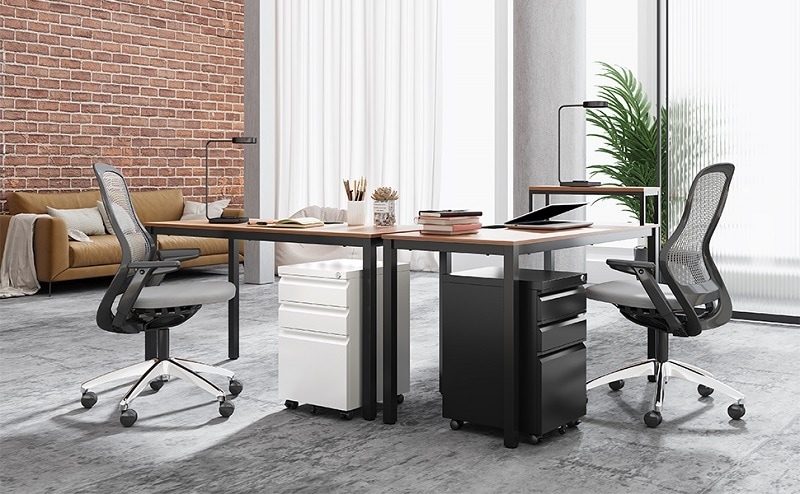
6. Storage
Label your storage solutions appropriately, whether or not you decide to share them. But to avoid conflict and for more convenience, it’s, of course, better to have separate shelves and storage units. If separate, make sure to put it in the corner of your room.
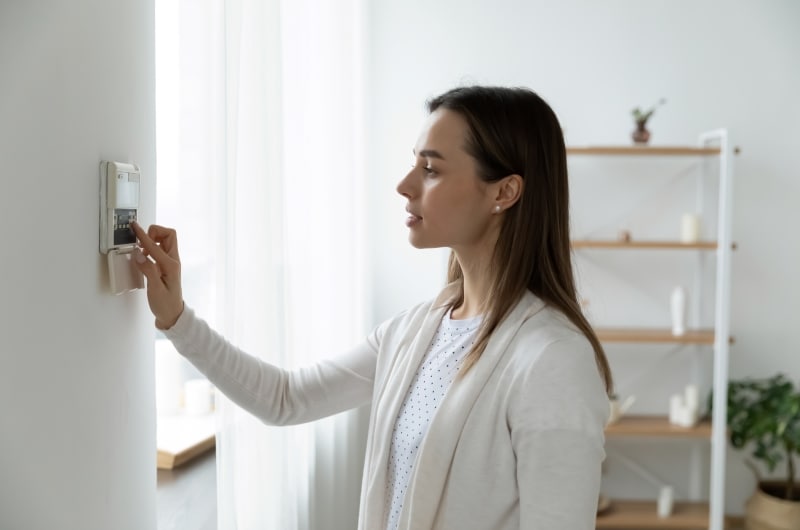
7. Temperature
Another factor that’s neglected is room temperature. In a shared space, you have to set the AC settings that both of you are comfortable with. Whoever of you wants it colder must have his or her desk placed nearer the AC. If not an AC, the same rule still applies. The electric fan must be placed beside the desk of the person with a colder room temperature preference.
Final Word
It’s easy to panic and worries about designing your shared workspace but the more important thing is to have fun while at it! You might find yourselves fighting over the pettiest of things but everything is resolved through good communication and striving to strike a compromise.